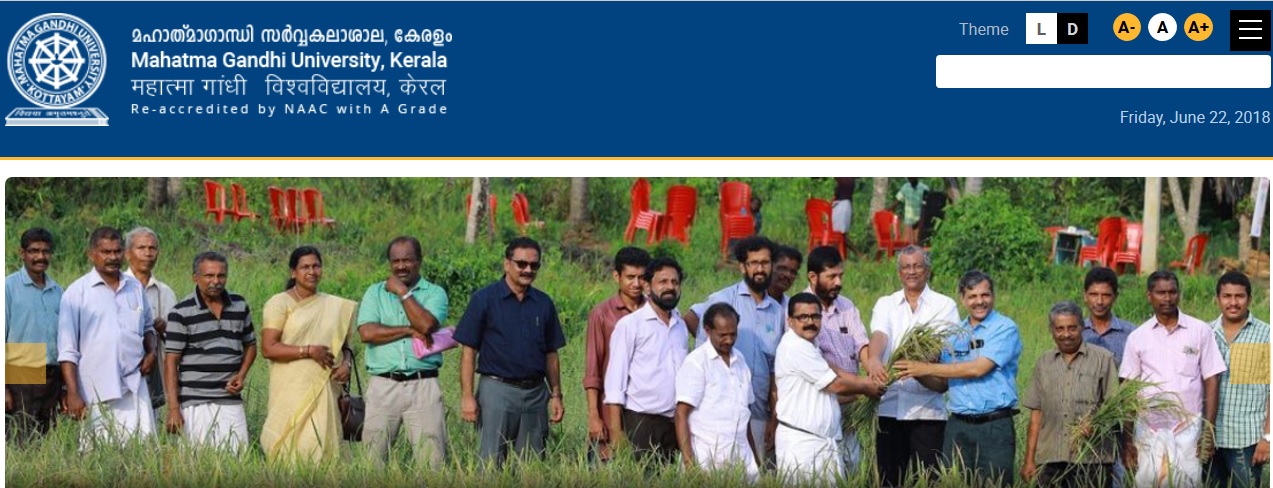CE010605 Water Resourses Engineering B.Tech Model Question Paper : mgu.ac.in
Name of the University : Mahatma Gandhi University
Department : Civil Engineering
Degree : B.Tech
Subject Code/Name : CE 010605/Water Resourses Engineering
Sem : VI
Website : mgu.ac.in
Document Type : Model Question Paper
Download Model/Sample Question Paper : https://www.pdfquestion.in/uploads/mgu.ac.in/5133-CE%20605.pdf
MGU Water Resources Engineering Question Paper
B.TECH Degree Examination, May 2013 :
Sixth Semester :
Branch: Civil Engineering
Related : MGU CE010604 Transportation Engineering-I B.Tech Model Question Paper : www.pdfquestion.in/5131.html
Time: Three Hours
Maximum Marks: 100
Answer all questions. :
PART A
1. What are types of irrigation?
2. What is Hydrological cycle?
3. Define Permeability and Transmissibility.
4. How are canals classified.
5. List the methods available for flood control. (5×3=15marks)
PART B
6. Define the following terms (i)Field capacity(ii)Wilting point(iii)Permanent Wilting point (iv)readily available soil moisture.(v) Evapotranspiration.
7. Define runoff. What are its components? List the factors affecting runoff from a catchment.
8. Explain Darcy’s Law related to Groundwater movement.
9. What is meant by Balancing depth? How it is determined?
10. How will you fix the reservoir capacity using a mass inflow curve and demand curve. (5×5=25marks)

PART C
11. (a) List the various modes of distribution of water in the field for irrigation. (4marks)
(b)A stream of 125liters/sec was diverted from a canal and 100liters/sec. was delivered to the field. An area of 1.6 hectares was irrigated in 8 hours. The effective depth of root zone was 1.7metres.The run-off loss in the field was 420m3.
The depth of water penetration varies linearly from 1.7m at the head end of the field to 1.3m at the tail end. Available moisture holding capacity of the soil is 20 cm per metre depth of soil. Existing moisture content was 50% of the moisture holding capacity.
Determine (i) water conveyance efficiency (ii) water application efficiency (iii) water storage efficiency (iv) water distribution efficiency. (8marks)
OR
12. (a) Briefly discuss any one method for estimating crop consumptive use. State the equation used with the assumptions. (5marks)
(b) An irrigation canal has gross command area of 80,000ha of which 90% is irrigable. The intensity of irrigation for Kharif season is 30% and for Rabi season is 60%.Find the discharge required at head of canal, If the duty at head is 800 ha/cumec for Kharif season and 1700ha/cumec for Rabi season. (7marks)
13. (a) What is a unit Hydrograph? Give the basic prepositions of Unit Hydrograph theory (5marks)
(b) Rainfall of magnitude 4.1cm and 2.9 cm occurring on two consecutive 4- hour durations on a catchment of area 27km2 produced the following hydrograph of flow at the outlet of the catchment. Estimate the rainfall excass and – index of storm. (7marks)
OR
14. (a) What is meant by run off? List various factors on which it depends. (8marks)
(b) Write applications of unit Hydrograph. (4marks)
15. (a)Explain gravity springs, Infiltration Wells and Infiltration galleries. (8marks)
(b) Differentiate between tube wells and open wells (4marks)
OR
16. (a) A 20 cm diameter tube well taps an artesian aquifer. Find the yield for a draw down of 3m in the well. The length of the strainer is 30 m, and the coefficient of permeability of the aquifer is 35 m/day. Assume the radius of influence as 300m.
If all other conditions remain the same, find the percentage change in yield under the following conditions. (i) Diameter of the well is 40 cm; (ii) draw down is 6m. (8marks)
(b) Define porosity, Specific yield, specific retention and storage coefficient. (4marks)
17. (a) An irrigation channel is formed in an alluvium soil at a bed slope of 1 in 4500. If the breadth to depth ratio for the channel is to be kept a 5.75 and Kutter’s roughness coefficient is 0.0225, Design the cross section of the canal.
Use Kennedy’s theory, with critical velocity ratio as unity. Also determine the discharge that can be allowed to flow through it. (8marks)
(b) Give a list of classification of canals on the basis of any three criteria.. (4marks)
OR
18. (a)Explain in detail Kennedy’s theory and Lacey’s theory for silt transportation (8marks)
(b) What are canal outlets? Discuss the requirements for good canal outlets. (4marks)
19. (a)Explain the mass inflow curve method to determine the capacity of a reservoir. (8marks)
(b) What considerations would you keep in view while designing a reservoir?. (4marks)
OR
20. (a)A flood of 4000 m3/s in a certain river has a return period of 40 years. (i)What is its probability of exceedence (ii) What is the probability that a flood of 4,000m3/s or greater magnitude may occur in the next 20 years? (iii) What is the probability of occurrence of a flood of magnitude less than 4,000m3/s? (7marks)
(b) What is meant by flood routing? Why it is necessary? Differentiate between Hydrologic and Hydraulic routing of floods, stating the governing equations used. (5marks)